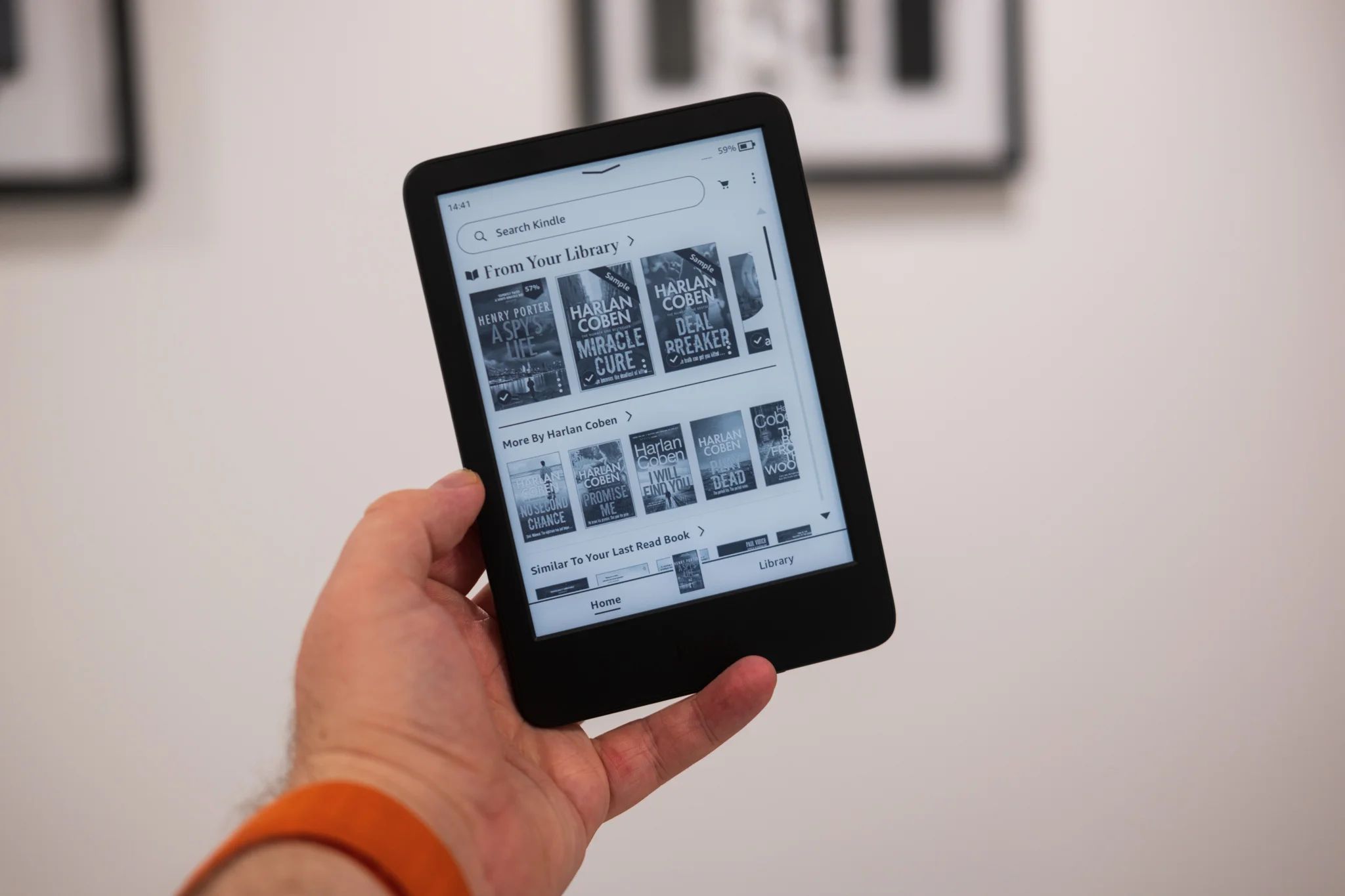Introduction
Welcome to the world of cold emailing! In this digital age, reaching out to potential clients, collaborators, or influencers via email has become an essential part of business and networking. Cold emailing allows you to make connections, introduce yourself or your brand, and ultimately, open doors to new opportunities.
However, cold emailing is not as simple as sending a generic message to a long list of recipients. To be effective, your email needs to be strategic, personalized, and compelling. This is where the art of cold emailing comes into play.
In this article, we will guide you through the process of crafting powerful cold emails that get noticed and elicit a positive response. Whether you are aiming to secure new clients, establish partnerships, or pitch your ideas, this guide will equip you with the knowledge and strategies needed to make an impact.
From understanding the purpose of cold emailing to researching your target audience, from crafting attention-grabbing subject lines to writing persuasive email content, we will cover every aspect of a successful cold email campaign. We will also delve into the importance of formatting, proofreading, and testing your email, making sure that your message is not only compelling but also error-free.
Ready to take your cold emailing skills to the next level? Let’s dive in and explore the key elements that will turn your cold emails from ordinary to extraordinary.
Understanding the Purpose of Cold Emailing
Cold emailing serves a specific purpose in your business and networking efforts. It allows you to initiate contact with individuals or organizations who may not be familiar with you or your brand. The goal is to establish a connection, build relationships, and ultimately, achieve your desired outcomes, such as generating leads, fostering collaborations, or expanding your network.
One of the key benefits of cold emailing is that it provides you with a direct line of communication. Unlike other forms of marketing or networking, where you have to wait for potential opportunities to come your way, cold emailing puts you in control. It allows you to proactively reach out to individuals who align with your target audience or who have the potential to benefit from your products, services, or ideas.
Furthermore, cold emailing enables you to tailor your message for each recipient. By personalizing your emails and demonstrating a genuine interest in their needs, you can increase the chances of capturing their attention and sparking their interest. This personal touch adds a human element to your communication, making it more engaging and memorable.
When developing your cold email strategy, it’s crucial to define your goals. Are you looking to generate new leads? Are you seeking partnerships or collaborations? Are you trying to secure media coverage or guest blogging opportunities? Clearly identifying your objectives will guide your approach and help you craft targeted and compelling emails.
Additionally, it’s important to understand that cold emailing is not a one-size-fits-all approach. Every recipient is unique, and their needs and preferences may differ. Take the time to research and understand your target audience, their pain points, and how your products or services can provide value. This knowledge will allow you to tailor your messages according to their specific needs and interests, increasing the chances of a favorable response.
Ultimately, the purpose of cold emailing is to create meaningful connections and opportunities. When done right, cold emailing can open doors, expand your network, and drive business growth. Embrace its potential, and let’s move forward to exploring how you can research your target list to maximize your cold emailing efforts.
Researching your Target List
Before you embark on a cold emailing campaign, it is crucial to thoroughly research and curate your target list. A well-researched target list will ensure that your cold emails are directed towards individuals or organizations who are most likely to be interested in your offerings.
Start by identifying your ideal customer or contact profile. Consider factors such as industry, job title, company size, geographic location, or any other criteria relevant to your objectives. This will help you narrow down your search and focus on reaching out to the right people.
Utilize online platforms and professional networks to find potential leads. Social media platforms like LinkedIn, Twitter, or industry-specific forums can be valuable resources for identifying key individuals in your target industry. Dig deep into their profiles or websites to gather insights about their current initiatives, challenges, or interests.
Take the time to understand your prospects’ pain points, goals, and preferences. This will allow you to tailor your cold emails to resonate with their specific needs. By showing that you have done your homework and are genuinely interested in their success, you will increase the likelihood of receiving a positive response.
Additionally, consider leveraging tools and software that can help you gather data and insights about your prospects. There are various CRM platforms, lead generation tools, and email finding tools available that can provide valuable information, such as email addresses, contact details, or engagement history. These tools can streamline your research process and enable you to build a highly targeted and effective target list.
Remember, quality matters over quantity when it comes to cold emailing. It’s better to have a smaller, highly targeted list of prospects who are more likely to engage with your email, rather than sending generic messages to a large number of recipients who may not be interested in what you have to offer.
Keep your target list organized and updated to maintain efficiency and effectiveness in your cold emailing campaign. Regularly review and refine your list based on feedback, responses, and new prospects you come across. Continuously learning and evolving your target list will ensure that your cold emails are always reaching the right audience.
With a well-researched target list in hand, you are ready to move on to the next step – crafting an attention-grabbing subject line that will entice your recipients to open your cold email.
Crafting an Attention-Grabbing Subject Line
An attention-grabbing subject line is the gateway to a successful cold email. It is the first impression you make on your recipients and can determine whether your email gets opened or relegated to the dreaded “spam” folder. To maximize your chances of capturing your audience’s attention, follow these tips when crafting your subject line:
- Keep it concise: Your subject line should be concise and to the point. Aim for no more than 6-8 words to ensure it is easily readable on mobile devices and does not get cut off in email previews.
- Create curiosity: Spark curiosity or intrigue with your subject line to entice recipients to open your email. Use an element of mystery, ask a thought-provoking question, or offer a compelling benefit to pique their interest.
- Personalize when possible: If you have any personal connection or reference that can be included in the subject line, such as a mutual contact or shared interest, use it to make your email stand out. Personalization shows that you have put in effort and increases the chances of grabbing attention.
- Highlight a benefit: Clearly communicate the value or benefit your recipients will gain by opening your email. Showcase how your email can solve a problem, provide valuable insights, or offer an opportunity for growth. Make it clear why they should take the time to read your message.
- Use urgency sparingly: Creating a sense of urgency can be effective in prompting immediate action. However, use this technique sparingly to avoid sounding spammy or gimmicky. Only use urgency if it is genuinely relevant and aligned with your message.
- Avoid clickbait tactics: While it’s important to capture attention, avoid resorting to clickbait tactics that can erode trust and credibility. Be authentic and transparent in your subject line, setting honest expectations for what recipients can expect in the email.
- Test and iterate: Subject lines can have a significant impact on open rates, so don’t be afraid to test different variations and analyze the results. A/B testing can help you identify the most effective subject line strategies for your target audience.
Remember, the subject line is the first impression you make, so make it count. Experiment with different techniques and find a balance between catching attention and maintaining professionalism. With an attention-grabbing subject line, your recipients will be compelled to open your email and discover the value you have to offer.
Personalizing your Email for Maximum Impact
Personalization is a powerful tool in cold emailing that can significantly increase your chances of success. It shows recipients that you have taken the time to understand their needs and tailor your message specifically for them. Here are some strategies to personalize your email for maximum impact:
- Address recipients by name: Use the recipient’s name in the email greeting to create a personal connection right from the start. Avoid using generic greetings like “Dear Sir/Madam” as they come across as impersonal.
- Reference their recent work or achievements: Show that you have done your homework by mentioning something specific about the recipient’s recent work, achievements, or contributions. This demonstrates your interest and makes your email more relevant to them.
- Connect with shared interests or connections: If you have any shared interests, connections, or affiliations with the recipient, mention them in your email. This can create an instant bond and make your email stand out among others.
- Highlight their pain points: Identify the challenges or pain points that the recipient may be facing and offer a solution or suggestion in your email. This demonstrates empathy and shows that you understand their needs.
- Show enthusiasm and sincerity: Express genuine enthusiasm and interest in connecting or working with the recipient. Use positive and enthusiastic language to convey your sincerity and passion for what you do.
- Personalize the content: Tailor the content of your email to reflect the recipient’s specific situation, industry, or role. Use examples or case studies that resonate with their context and demonstrate the value you can bring to them.
- Ask thoughtful questions: Engage the recipient by asking thoughtful questions related to their work or interests. This encourages them to respond and provides an opportunity for further conversation.
- Segment your email list: If you have a large target list with different segments, consider creating slightly different versions of your email tailored to each segment. This allows for more personalized messaging and maximizes relevance.
- Always double-check your personalization: Mistakes in personalization can be embarrassing and damage your credibility. Always double-check the recipient’s name, job title, and any other personalized details to ensure accuracy.
Remember, personalization goes beyond simply including the recipient’s name. It involves understanding their needs, connecting on a deeper level, and presenting your message in a way that resonates with them. The more personalized your email is, the higher the likelihood of capturing the recipient’s attention and generating a positive response.
Writing a Compelling Opening Paragraph
The opening paragraph of your cold email is crucial in capturing the recipient’s attention and encouraging them to continue reading. A compelling opening sets the tone for the rest of your email and entices the recipient to learn more about what you have to offer. Here are some tips to help you craft a powerful opening paragraph:
- Start with a personalized greeting: Begin your email with a friendly and personalized greeting that includes the recipient’s name. This shows that you have taken the time to address them individually and adds a personal touch to your communication.
- Make a strong first impression: Hook the reader from the start by making a bold statement, asking a thought-provoking question, or sharing an interesting statistic or fact. Your opening sentence should immediately grab their attention and make them eager to read on.
- Highlight a common challenge or pain point: Identify a problem or challenge that your recipient can relate to and mention it in your opening paragraph. This demonstrates that you understand their needs and establishes a connection right from the beginning.
- Share a relevant success story: If you have a success story or case study that aligns with the recipient’s situation, briefly mention it in your opening paragraph. This can generate curiosity and create a sense of credibility around your offerings.
- Offer a unique value proposition: Clearly articulate the value that you can provide to the recipient. Whether it’s saving them time, increasing their productivity, or solving a specific problem, make it clear how your email will benefit them. Focus on the recipient’s needs and show how you can fulfill them.
- Show empathy and understanding: Demonstrate empathy by acknowledging the challenges or obstacles the recipient may be facing. Let them know that you understand their situation and are here to help. This builds trust and establishes a connection.
- Keep it concise and focused: Keep your opening paragraph concise and focused. Avoid going into too much detail or overwhelming the recipient with unnecessary information. Provide enough context to capture their attention and leave them wanting to learn more.
- Create a sense of urgency (if appropriate): If there is a time-sensitive element related to your offering, such as a limited-time promotion or a deadline, subtly introduce it in your opening paragraph. This can create a sense of urgency and prompt the recipient to take action.
- Set the tone for the rest of the email: The opening paragraph serves as a preview of what’s to come in the rest of your email. Make sure the tone, style, and language you use align with your overall message and objectives. It should set a positive and engaging tone that encourages the recipient to keep reading.
Remember, the opening paragraph of your cold email is your opportunity to make a strong first impression and captivate the recipient’s attention. Take the time to carefully craft this section, ensuring that it is personalized, compelling, and focused on the recipient’s needs and interests. With a captivating opening, you set the stage for the rest of your email to make a lasting impact.
Showcasing your Value in the Body of the Email
The body of your cold email is where you have the opportunity to showcase your value proposition and explain why the recipient should take interest in what you have to offer. This section is critical in persuading the reader to consider your proposal or take the desired action. Here are some key strategies to effectively showcase your value in the body of the email:
- Address the recipient’s pain points: Revisit the challenges or pain points that you mentioned in the opening paragraph and elaborate on how your product, service, or solution can address them. Clearly articulate the benefits and advantages that the recipient can expect by working with you.
- Provide social proof: Incorporate social proof by mentioning any satisfied clients, success stories, or testimonials that demonstrate the positive outcomes your offering has produced. This builds trust and credibility, showing the recipient that others have benefited from what you have to offer.
- Focus on the recipient’s needs: Keep the focus of your email on the recipient and their specific needs. Highlight the ways in which your product or service can solve their problems, improve their processes, or enhance their results. Tailor your message to resonate with their unique situation.
- Highlight key features and benefits: Clearly outline the key features of your offering and explain how each feature translates into a benefit for the recipient. Use bullet points or numbered lists to make this information easily digestible and scannable.
- Provide relevant examples: Use real-life examples, case studies, or practical applications to illustrate how your offering has helped others achieve their goals. Make these examples relatable and show how they align with the recipient’s industry or situation.
- Quantify your results: Whenever possible, quantify the results or outcomes that your product or service has delivered. Provide specific numbers and statistics that highlight the impact you can make. This adds credibility to your claims and demonstrates tangible value.
- Address potential objections: Anticipate any potential objections or concerns that the recipient may have and address them proactively in your email. This shows that you understand their reservations and are ready to provide solutions or reassurance.
- Keep it concise and scannable: While it’s important to provide the necessary information, keep the body of your email concise and scannable. Use short paragraphs, bullet points, and subheadings to make your email easy to read and navigate.
- Include a compelling call-to-action: Clearly state the desired action you want the recipient to take. Whether it’s scheduling a call, visiting a website, or requesting more information, make your call-to-action explicit and compelling.
- Be professional, yet personable: Maintain a professional tone throughout your email, but also infuse it with a touch of personality to make it more relatable and engaging. Show your genuine interest in the recipient and their success.
Remember, the body of your email is where you demonstrate the value you can provide to the recipient. Make sure your message is clear, compelling, and tailored to their needs. By showcasing your value effectively, you increase the chances of the recipient taking the desired action and moving forward in their engagement with you.
Including a Clear Call-to-Action
A clear and compelling call-to-action (CTA) is a vital component of a successful cold email. It serves as a guide for the recipient and prompts them to take the desired action, whether it’s scheduling a meeting, making a purchase, or signing up for a service. Here are some best practices to consider when including a CTA in your cold email:
- Be specific: Clearly outline the action you want the recipient to take. Avoid generic CTAs like “Get in touch” or “Learn more.” Instead, use specific and actionable language, such as “Schedule a call,” “Download the ebook,” or “Claim your discount.”
- Create a sense of urgency: Encourage immediate action by incorporating a sense of urgency into your CTA. Use phrases like “Limited time offer,” “Act now,” or “Don’t miss out” to instill a sense of urgency and prompt the recipient to take action sooner rather than later.
- Make it easy to respond: Ensure that your CTA is easy to understand and execute. Provide clear instructions on how the recipient can take the desired action, such as providing a link to a scheduling tool or a direct email address to contact. Make it as effortless as possible for them to respond.
- Highlight the benefits: Reinforce the value that the recipient will gain by taking the desired action. Emphasize the benefits they will experience, such as saving time, increasing productivity, or achieving their goals. This motivates them to act by highlighting what they stand to gain.
- Keep it visually distinct: Make your CTA visually stand out from the rest of the email. Use larger font sizes, bold or contrasting colors, or button-style formatting to make it easily noticeable. This helps draw attention to your CTA and increases the chances of it being clicked or followed.
- Position it strategically: Place your CTA in a prominent position within your email. Ideally, it should be located towards the end of the email, after you have clearly demonstrated the value you can provide. This allows the recipient to be fully informed before being prompted to take action.
- Create a sense of reciprocity: Offer something of value in exchange for their action. Whether it’s a free resource, a special discount, or exclusive access, providing an incentive encourages reciprocity and increases the likelihood of the recipient responding positively to your CTA.
- Test and iterate: Just like any other element of your cold email, it’s important to test different variations of your CTA to determine what resonates best with your audience. Experiment with different wording, formatting, or placement to optimize the effectiveness of your CTA.
- Follow up appropriately: Once the recipient takes the desired action, be sure to follow up promptly and appropriately. This reinforces your professionalism and commitment to their needs, ultimately building trust and furthering your relationship with them.
Remember, a well-crafted call-to-action is the final push that encourages the recipient to respond to your cold email. By being clear, persuasive, and tailored to their needs, your CTA increases the likelihood of achieving your desired outcomes and converting your prospects into valuable leads or customers.
Formatting and Proofreading your Email
Formatting and proofreading are essential steps in ensuring that your cold email is polished, professional, and error-free. By paying attention to these details, you enhance the readability and credibility of your message. Here are some tips to help you format and proofread your email effectively:
- Use a professional email template: Start with a clean and professional email template that aligns with your branding. This ensures consistency and establishes a sense of professionalism from the first glance.
- Keep it simple and scannable: Use short paragraphs, bullet points, and subheadings to break up the text and make your email easy to read and navigate. Avoid dense blocks of text that can overwhelm the recipient.
- Choose a legible font and size: Opt for a font that is easy to read, such as Arial or Times New Roman. Use a font size between 10 and 12 points to ensure readability on both desktop and mobile devices.
- Pay attention to spacing and alignment: Use proper line spacing and ensure that your text is aligned consistently throughout the email. This creates a clean and organized appearance.
- Proofread for grammar and spelling errors: Thoroughly proofread your email for grammar, spelling, and punctuation errors. Use spell-check tools and consider reading your email aloud to catch any overlooked mistakes. Avoid relying solely on automated tools and take the time to review it manually as well.
- Check for clarity and coherence: Ensure that your email flows smoothly and is easy to understand. Double-check the logical progression of your ideas and ensure that your message is clear and concise.
- Test your email on different devices: Preview and test your email on various devices and email clients to ensure that it appears correctly. Pay attention to layout, formatting, and any responsive design elements.
- Avoid excessive formatting: While it’s important to add some formatting to enhance readability, avoid excessive use of bold, italics, or underlining, as it can make your email appear cluttered and unprofessional.
- Include your contact information: Make sure to include your contact information, such as your name, business name, phone number, and email address, in your email signature. This provides the recipient with a means to easily reach out to you.
- Double-check recipient details: Before hitting the send button, verify that you have entered the correct email address of the recipient. Sending an email to the wrong person can lead to misunderstandings or damage your credibility.
Formatting and proofreading your email may seem like minor details, but they can make a significant difference in how your message is perceived. By presenting a well-formatted and error-free email, you demonstrate professionalism and attention to detail, which can go a long way in building trust and credibility with your recipients.
Testing and Iterating your Cold Email Campaign
Testing and iterating your cold email campaign is a crucial step to optimize its effectiveness and maximize your chances of success. By continuously refining your approach based on feedback and data, you can improve your open rates, response rates, and overall engagement. Here are some key strategies for testing and iterating your cold email campaign:
- Segment your audience: Divide your target list into different segments based on criteria such as industry, job title, or level of engagement. This allows you to tailor your messaging and test different approaches for each segment.
- A/B test subject lines: Test different subject lines to determine which ones generate higher open rates. Create multiple variations and send them to different segments of your audience. Analyze the results to identify the subject lines that resonate best with your recipients.
- Experiment with email copy: Test different variations of your email copy to determine which ones yield better response rates. Make small tweaks to the language, structure, or call-to-action and observe how the changes impact engagement. Continuously iterate based on the feedback you receive.
- Vary the timing and frequency of your emails: Test different sending times and frequencies to identify the optimal schedule for engaging your audience. Some recipients may be more responsive to morning emails, while others may prefer afternoon outreach. Experiment and adjust accordingly.
- Track and analyze data: Use email tracking tools to measure the performance of your cold email campaign. Monitor metrics such as open rates, click-through rates, and conversion rates. Analyzing the data will provide insights into what is working and what needs improvement.
- Seek feedback from recipients: Reach out to recipients who have engaged with your emails and ask for their feedback. This can provide valuable insights into the effectiveness of your messaging, as well as potential areas for improvement. Use this feedback to refine your approach.
- Continuously optimize your templates: As you gather data and feedback, make adjustments to your email templates to improve their impact. Whether it’s modifying the subject line, restructuring the email body, or refining the call-to-action, regularly update and optimize your templates.
- Learn from successful campaigns: Identify your most successful cold email campaigns and analyze what made them effective. Look for patterns, commonalities, and strategies that generated high response rates. Apply those insights to future campaigns for consistent improvement.
- Stay informed on industry trends: Keep up with industry trends, best practices, and changes in email marketing. New technologies and strategies emerge regularly, so staying informed allows you to adapt and evolve your approach for better results.
- Keep an open mind and be willing to iterate: Successful cold email campaigns are often the result of trial and error. Be open to experimenting with different tactics, even if they deviate from your initial approach. Embrace the iterative process and be willing to adapt based on what you learn along the way.
Remember, testing and iterating are ongoing processes that require time, patience, and flexibility. By continuously refining your cold email campaign, you can optimize its performance and achieve better outcomes. With each iteration, you are one step closer to finding the most effective approach for engaging your target audience.

























